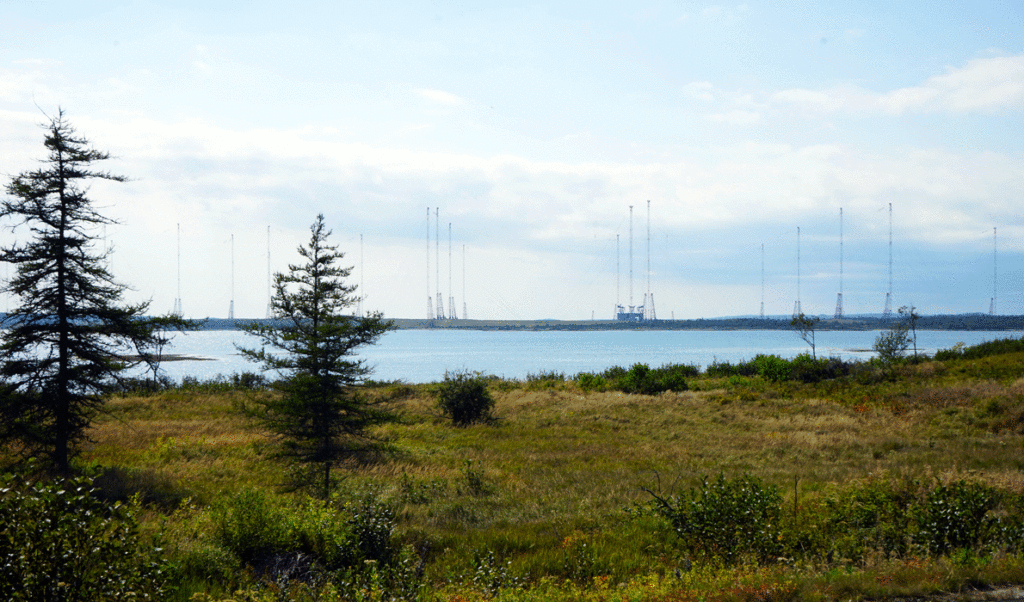By Tom Walsh
Among the people working dawn to dusk on the Downeast coast are those whose bosses are in the Pentagon.
The rich history of the 20th century Cold War military presence in the region continues to resonate. That’s especially true within the Hancock County village of Prospect Harbor and the remote Washington County community of Cutler.
Dating back to 1908 and a small radio receiving station on Mount Desert Island, the military presence in Downeast Maine has historically involved hundreds of men and women, most wearing U.S. Navy uniforms. While there remains an active and somewhat hush-hush Pentagon presence in both Cutler and Prospect Harbor, these 21st century installations now involve very few people in uniform. Instead, they rely heavily on technology that was science fiction and wishful thinking 100 years ago.
Security concerns make civilian insights into how both bases now function hard to come by. And what public information is accessible is likely best explained by those with doctorates in electrical engineering and physics, who understand how satellite tracking, telemetry and low-frequency transmitters do what they do.
Cutler’s “bow tie” configuration of antenna masts have ranged in height from 200 to 980 feet—by far the tallest structure in Maine. The Cutler array continues to be among the most powerful low-frequency radio transmitters in the world. It remains essential to the Department of Defense’s ability to communicate globally with submarines and other U.S. warships armed with nuclear weapons. Given that crucial operational capability, tiny Cutler has been reported to be included among targets for immediate, strategic destruction in the event of a global war.
Prospect Harbor is home to the high-security, six-acre Detachment ALFA of the Naval Satellite Operations Center. It serves as “mission control” for networks of satellites capable of monitoring real-time sea conditions—wave heights, winds, sea currents and weather—from virtually anywhere visible from space, despite cloud cover. As required, naval technicians in Prospect Harbor can point surveillance satellites at global areas of strategic concern, such as what’s happening right now in Syria or Afghanistan, using four ground terminal systems supported by an annual operating budget that hovers around $2.5 million.
Fewer than 50 sailors and civilians staff the complex. They work 24/7/365 behind no-nonsense, onshore and offshore security barriers, including tall fences strung with glittering silver spirals of razor wire.
The operational details of what they do with a shoreline array of four ground terminal systems involves well-kept secrets. What little is known is that Prospect Harbor’s satellite tracking, telemetry, and command station is capable of managing at least five different constellations of earth-orbiting satellites under the U.S. Navy’s satellite control authority.
The Prospect Harbor complex was built between 1962 and 1965 during the deep-freeze depths of the Cold War. Originally it was unstaffed and was remotely controlled from Korea. Those who were later in charge claim it was a significant installation in “winning” the Cold War.
“It was constructed to provide accurate navigation information to submarines capable of launching ICBMs (intercontinental ballistic missiles),” one former commanding officer said. “With the level of accuracy that system provided, we knew—and the Russians knew—we could put our missiles on target.”
But the military’s best-conceived plans were trumped on Mount Desert Island. John D. Rockefeller Jr. decided the U.S. Naval presence on MDI’s Otter Cliffs was an impediment to his vision of expanding Acadia National Park’s network of carriage roads. Rockefeller decreed that the navy had to leave. To that end, Rockefeller negotiated a deal to relocate, at his deep-pocket family’s expense, the navy’s presence to a shoreline eight nautical miles across Frenchman Bay at the Schoodic Peninsula in Winter Harbor. An analysis of the 126-acre site on Big Moose Island more than satisfied the Navy’s directional-finding radio requirements, and so the MDI naval facilities were relocated to Schoodic.
Over the years, that relocation profoundly changed quiet little Winter Harbor and its lobster harbor that time had forgotten. Construction of housing for naval personnel was a big deal, both on Big Moose Island and within the Winter Harbor community, where it involved military housing in townhouses and single-family homes.
Years later, when military staffing requirements both in Winter Harbor and Cutler were inevitably diminished by technology, both communities faced, in effect, base closures and a relatively huge inventory of abandoned housing. Both communities managed to make lemonade out of lemons.
In Winter Harbor, U.S. Navy housing was acquired by Philadelphia millionaire F. Eugene “Fitz” Dixon, who by then was the patriarch of Winter Harbor’s Grindstone Neck, an enduring summer community of monied Philly rusticators. Dixon invested what was required to upgrade the naval housing to make it marketable for purchase as summer home destinations. He then deeded all of the property to the town of Winter Harbor, which collected the profits on property sales.
Cutler saw its military housing morph into commercial condo sales of former Department of Defense townhouse units overlooking the still-operational antenna array.
Beyond real estate, the two navy bases had no small impact on individuals stationed at each over the years. In both Cutler and Winter Harbor, more than a few troops were smitten by the ambiance of the Downeast coastline and, after their deployments, opted to stick around. Among them is Dave Seward, who still lives near Winter Harbor, decades after his service at the naval base in Winter Harbor.
Now 70, Seward retired from the navy and, over the next 42 years, owned and operated Anderson’s Marine and Hardware on Route 1 in nearby Gouldsboro. Seward readily admits he knew absolutely nothing about marine supplies nor hardware when he bought the business on a handshake. He just wanted to stay. His five-generation customers gave him a mountain of grief as a result. In time, all became friends. Seward now lives in a spectacular shoreline property that is a stone’s throw from the hardware store and overlooks Frenchman Bay, showcasing the rugged seaside landscape of Mount Desert Island.





